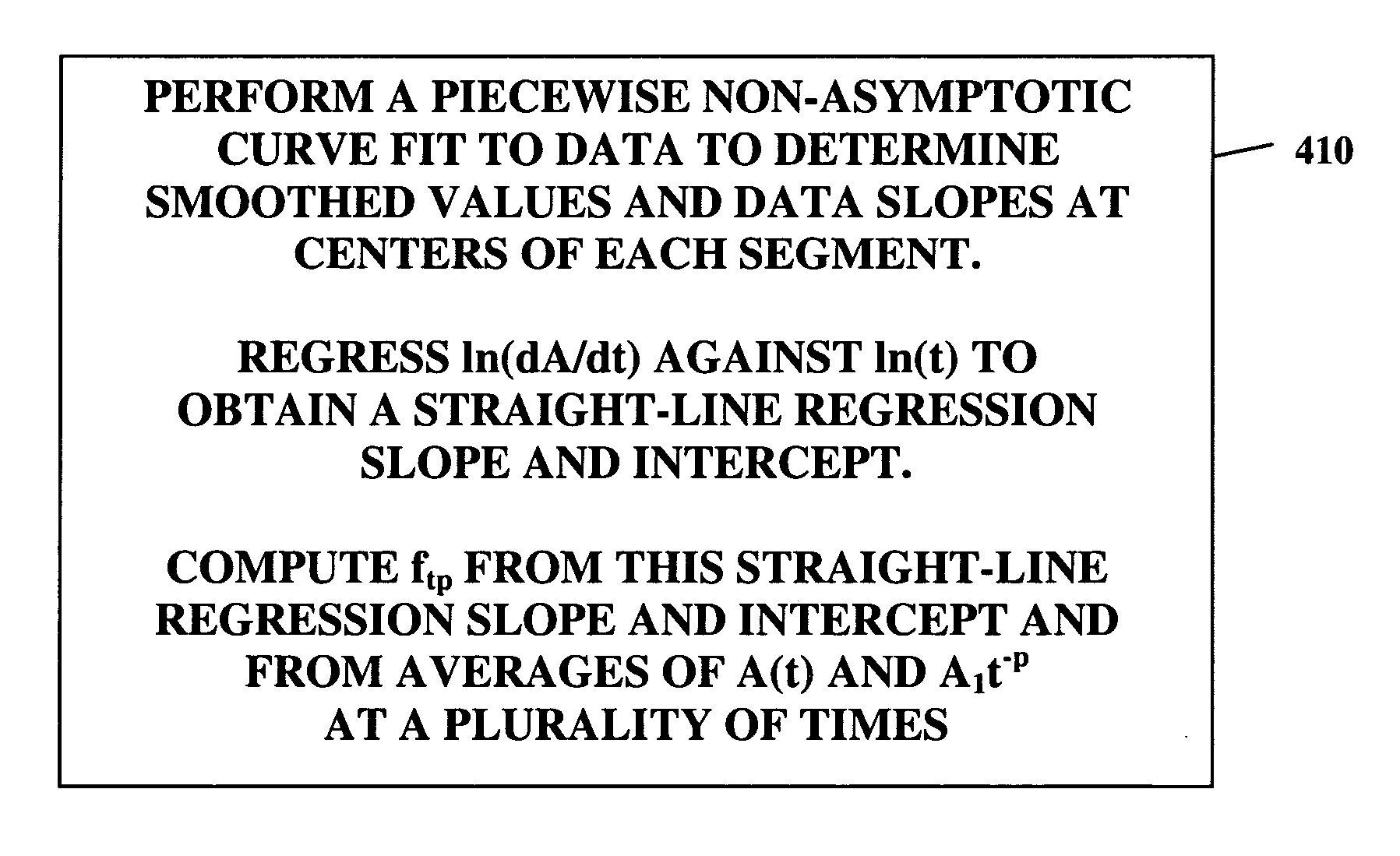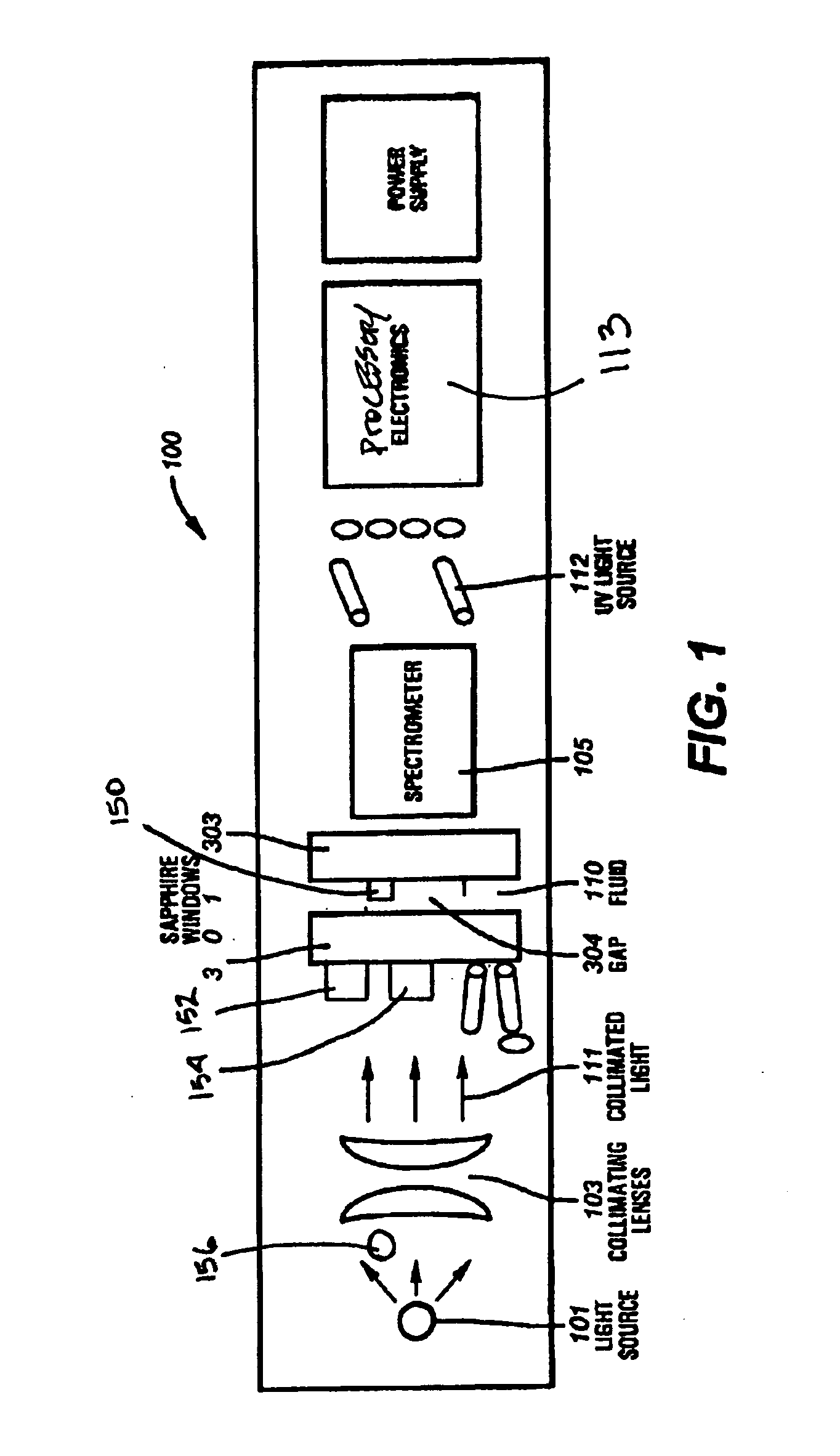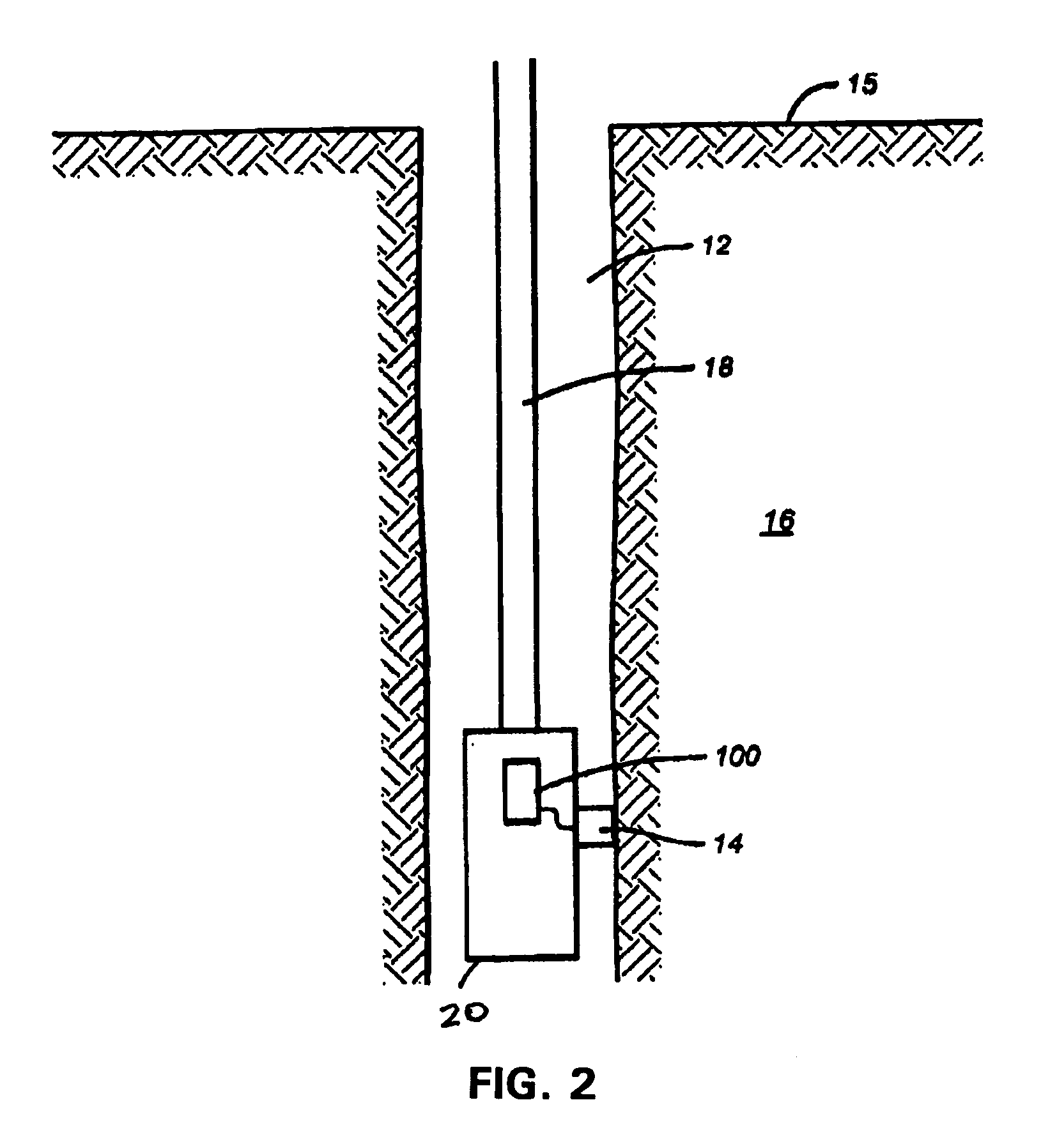Method and apparatus for estimating of fluid contamination downhole
a technology of fluid contamination and method, applied in the field of method and apparatus for quantifying fluid contamination, can solve the problems of fluid sample purity, sample is still not at 100% purity, and does not provide quantitative value, so as to improve the fit to data and improve the fit to pulses
- Summary
- Abstract
- Description
- Claims
- Application Information
AI Technical Summary
Benefits of technology
Problems solved by technology
Method used
Image
Examples
first embodiment
[0038] In the present invention, the method and apparatus of the present invention fit fluid measurement data to a non-asymptotic curve. One example of a non-asymptotic curve is a curve which provides an improved fit to the data over the typical pumping time and, which can also be successfully extrapolated to several times that pumping time, but which approaches plus or minus infinity at infinite times, such as a power series approximation. Another example of a non-asymptotic curve is an equation that has an oscillatory component such as a sine wave, which never reaches a fixed limit. The sine wave can be adjusted in frequency, phase and amplitude to provide an improved fit to pulses in the monitored response that are associated with each stroke of the pump.
[0039] In a second embodiment, the method and apparatus use pattern recognition. That is, the method and apparatus of the present invention use an equation such as log(1−ftp)=(−p)log(t)+log(A1 / A0). The method and apparatus then p...
second embodiment
[0043] As shown in FIG. 5, in the present invention, a method and apparatus are provided that use a non-asymptotic curve to fit the data 510. In this embodiment, the method and apparatus fit a modified version of Eq. 1 to data, wherein the modified equation does not approach an asymptote at infinite time such as the examples shown in Equations 8 and 9 below, using the form A=A0−h(t) where t→∞ and h(t) does not go to zero.
A=A0−A1Σtx, where x=−n to +m. Eq. 8
A=A0−A1[t−p+k−1 sin (ωt)]. Eq. 9
[0044] The sin(ωt) term can provide a better fit to data that has periodic spikes in response that commonly occur with every pump stroke as particulates are stirred up. Of course, this oscillating term prevents the curve from ever stabilizing to a fixed value no matter how long the time so it is not an asymptotic curve. The value of ω can be chosen to coincide with the pump-stroke frequency.
For Eq. 9, the present invention finds best A0, A1 using a linear least squares fit to the N data point...
third embodiment
[0045] As shown in FIG. 6, in a third embodiment, the present invention provides for a pattern recognition 610. As shown in FIG. 6, the present invention performs a pattern recognition for a trial-and-error estimate of A0, rather than a direct calculation of A0. In this embodiment, the pattern to be observed is the closest resemblance to a straight line as determined by the highest correlation coefficient, R, for a linear least squares fit. The method and apparatus performs a series of linear least squares fits to the absorbance data using a series of different estimates of A0 starting with, A+ε, A+2ε, up to A+Nε, where A+Nε0 value for which the fit is closest to a straight line in log-log space then becomes the best estimate of A0. Closeness of the fit to a straight-line shape is determined by the closeness of R2 to unity, where R2 is the correlation coefficient squared that ranges from 0 (no correlation) to 1 (perfect correlation). That is, for a series of A0 guesses, find the bes...
PUM
 Login to View More
Login to View More Abstract
Description
Claims
Application Information
 Login to View More
Login to View More - R&D
- Intellectual Property
- Life Sciences
- Materials
- Tech Scout
- Unparalleled Data Quality
- Higher Quality Content
- 60% Fewer Hallucinations
Browse by: Latest US Patents, China's latest patents, Technical Efficacy Thesaurus, Application Domain, Technology Topic, Popular Technical Reports.
© 2025 PatSnap. All rights reserved.Legal|Privacy policy|Modern Slavery Act Transparency Statement|Sitemap|About US| Contact US: help@patsnap.com



